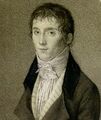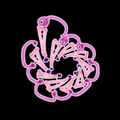Template:Selected anniversaries/July 5: Difference between revisions
No edit summary |
No edit summary |
||
| Line 40: | Line 40: | ||
|File:Emmy Noether.jpg|link=Emmy Noether (nonfiction)|1905: Mathematician [[Emmy Noether (nonfiction)|Emmy Noether]] publishes new class of [[Gnomon algorithm functions]] which detect and prevent [[crimes against mathematical constants]]. | |File:Emmy Noether.jpg|link=Emmy Noether (nonfiction)|1905: Mathematician [[Emmy Noether (nonfiction)|Emmy Noether]] publishes new class of [[Gnomon algorithm functions]] which detect and prevent [[crimes against mathematical constants]]. | ||
||1906: Paul | ||1906: Paul Drude dies ... physicist specializing in optics. He wrote a fundamental textbook integrating optics with Maxwell's theories of electromagnetism. In 1894 he was responsible for introducing the symbol "c" for the speed of light in a perfect vacuum. Pic. | ||
||1911: Endel Aruja born ... physicist and academic. | ||1911: Endel Aruja born ... physicist and academic. Pic search maybe: https://www.google.com/search?q=Endel+Aruja | ||
||1911: George Johnstone Stoney dies ... physicist. He is most famous for introducing the term electron as the "fundamental unit quantity of electricity". Pic. | ||1911: George Johnstone Stoney dies ... physicist. He is most famous for introducing the term electron as the "fundamental unit quantity of electricity". Pic. | ||
Revision as of 05:06, 12 July 2019
1461: Mathematician, astronomer, bishop, and APTO theological liason Johann Regiomontanus gives his famous "No more lies" sermon in which he accuses the House of Malevecchio of "funding and conducting crimes against astronomical constants which span decades, if not centures or millenia."
1687: Isaac Newton publishes Philosophiæ Naturalis Principia Mathematica ("Mathematical Principles of Natural Philosophy"). Principia states Newton's laws of motion, forming the foundation of classical mechanics; Newton's law of universal gravitation; and a derivation of Kepler's laws of planetary motion (which Kepler first obtained empirically).
1833: Inventor Nicéphore Niépce dies. He invented heliography, a technique which he used to create the world's oldest surviving product of a photographic process.
1939: "The Safe-Cracker was not a math crime," says art critic and alleged math criminal The Eel. "I was looking for evidence that I was framed. And I found it."
1942: Mathematician Oskar Bolza dies. He is known for his research in the calculus of variations; his work on variations for an integral problem involving inequalities later became important in control theory.
2009: Discovery of the Staffordshire hoard, the largest hoard of Anglo-Saxon gold ever discovered in England, consisting of more than 1,500 items found near the village of Hammerwich, near Lichfield, Staffordshire.
2017: Signed first edition of Violet Spiral purchased for an undisclosed sum by "an eminent Gnomon algorithm theorist from New Minneapolis, Canada.
2018: Signed first edition of Pin Man #1 stolen from the Louvre in a daring daylight robbery allegedly masterminded by Baron Zersetzung.







